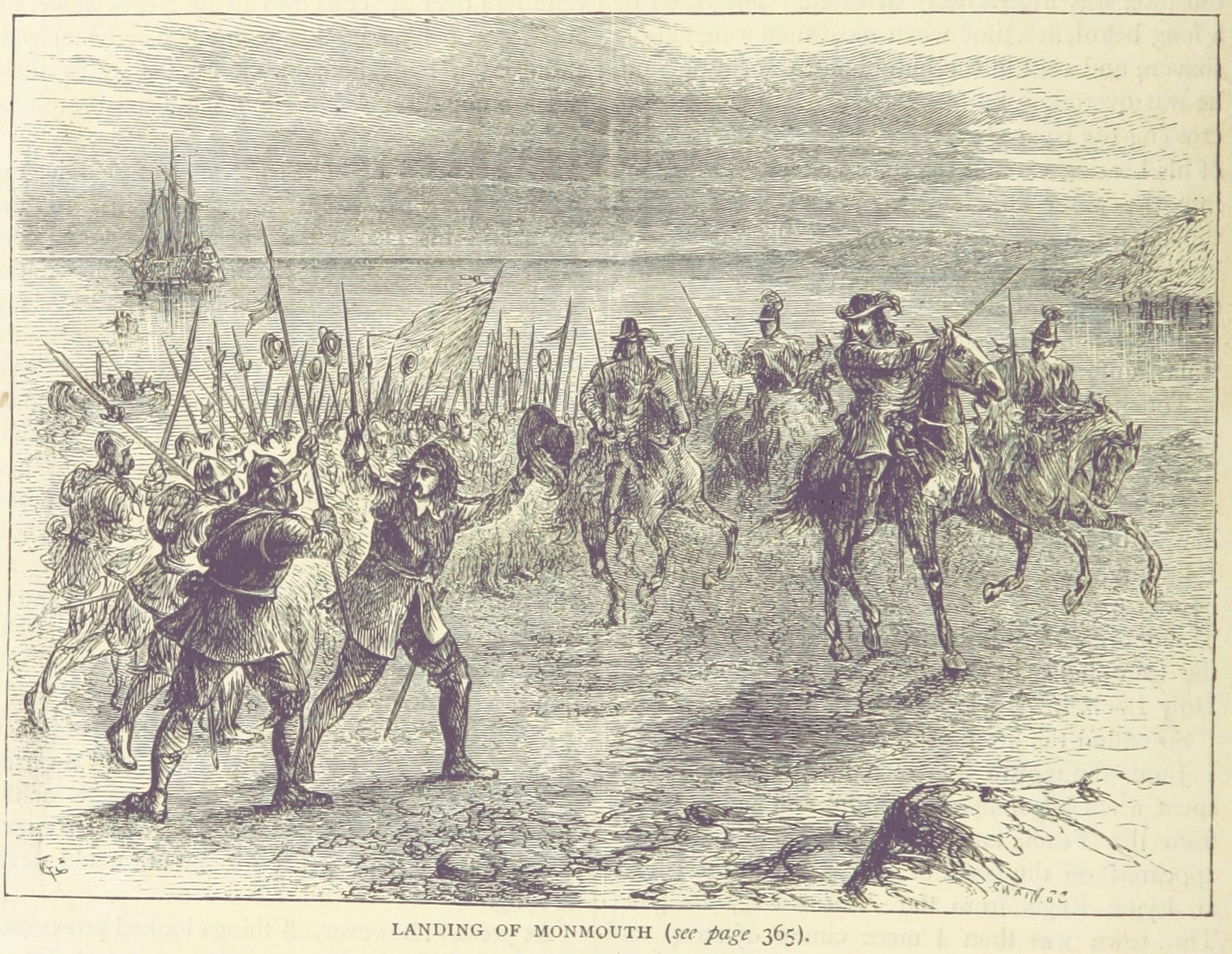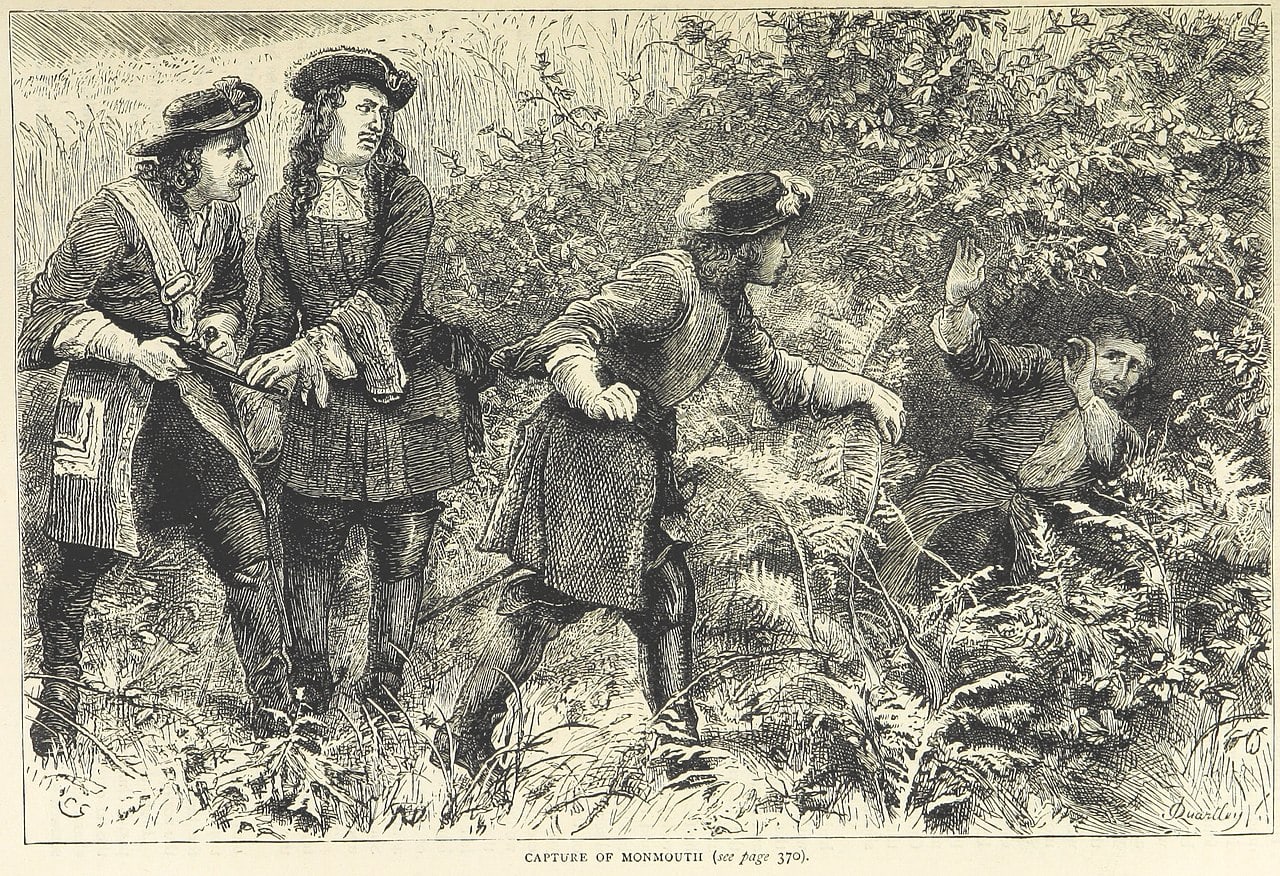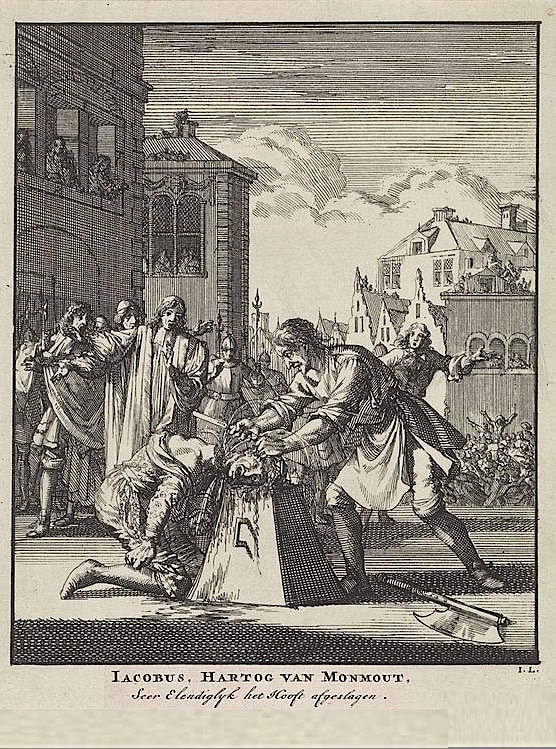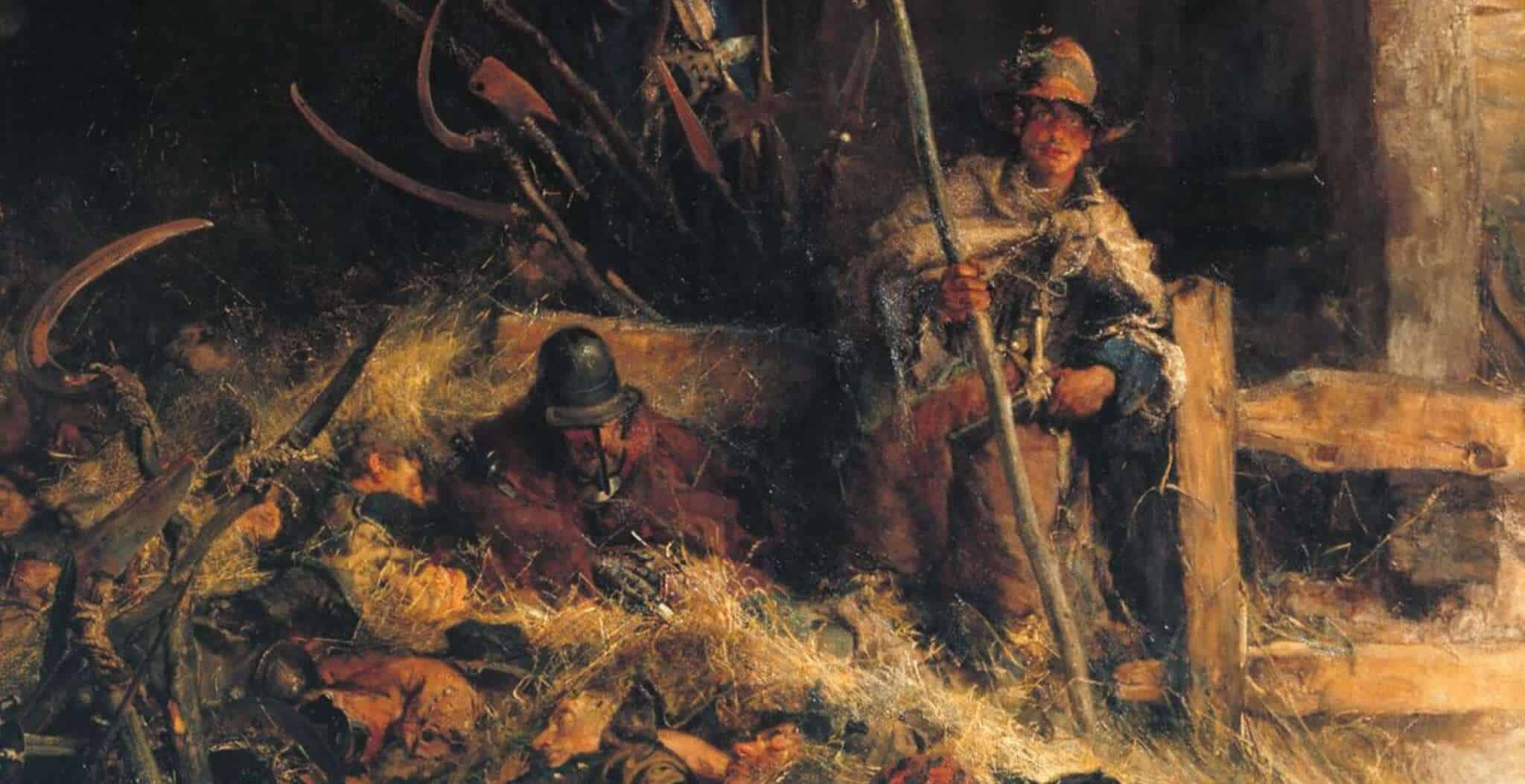One of the most harrowing episodes in the history of England’s West Country began on 11th June 1685.
This day can be called the first of the Duking days: – so called because that was the day that Charles II’s illegitimate son, the Duke of Monmouth, sailed into Lyme Regis harbour accompanied by 81 hopeful men.
Monmouth’s aim was to wrest the British crown from his uncle, James II, and within days 6000 West Countrymen had rallied to his cause. But Monmouth’s men were poorly armed, badly disciplined and some only had pitchforks as weapons!

At first this ‘motley’ army did well; the rebels took over Somerset and Monmouth was declared ‘King’ in Taunton market place.
James II marshalled his troops and on the night of July 5th the Battle of Sedgemoor took place. Not surprisingly, because of the lack of proper equipment, Monmouth’s army was soon routed.
Monmouth himself fled the battlefield and was found three days later cowering in a ditch at Ringwood in the New Forest.

When he was brought before King James in London he wept, begged and pleaded for his life. He even promised to become a Catholic if his life was spared. It was no use; he was beheaded on Tower Hill in London on July 15th 1685.

The bloodshed had only just started. The infamous Judge Jefffreys was sent by King James to Taunton to mete out justice to the rebels. The trials became known as the ‘Bloody Assize’ as more than 200 were hanged, drawn and quartered, and 800 transported to the West Indies to work on the sugar plantations.
One of Monmouth’s followers captured after the Battle of Sedgemoor was a famous runner. He was promised his life if he could out-run a horse. He was roped alongside a stallion and raced across Somerset beside it. The horse is said to have tired before he did, but his captors broke their promise and hanged him anyway!
Heddon Oak, near Crowcombe, is one of the trees still pointed out as a ‘Gallows Tree’. It is said that sometimes the clank of chains and gasps of choking men can be heard there.
Another fugitive from the battle, John Plumley the Lord of Locking Manor escaped to his home and hid nearby, but his pet dog gave away his hiding place and he was hanged. His distraught wife swept the dog up in her arms and plunged it down Locking Well to her death.
The cruelty and bloody aftermath of the Battle of Segemoor still haunts the memory of the West Country and stories of restless ghosts abound still to this day.







